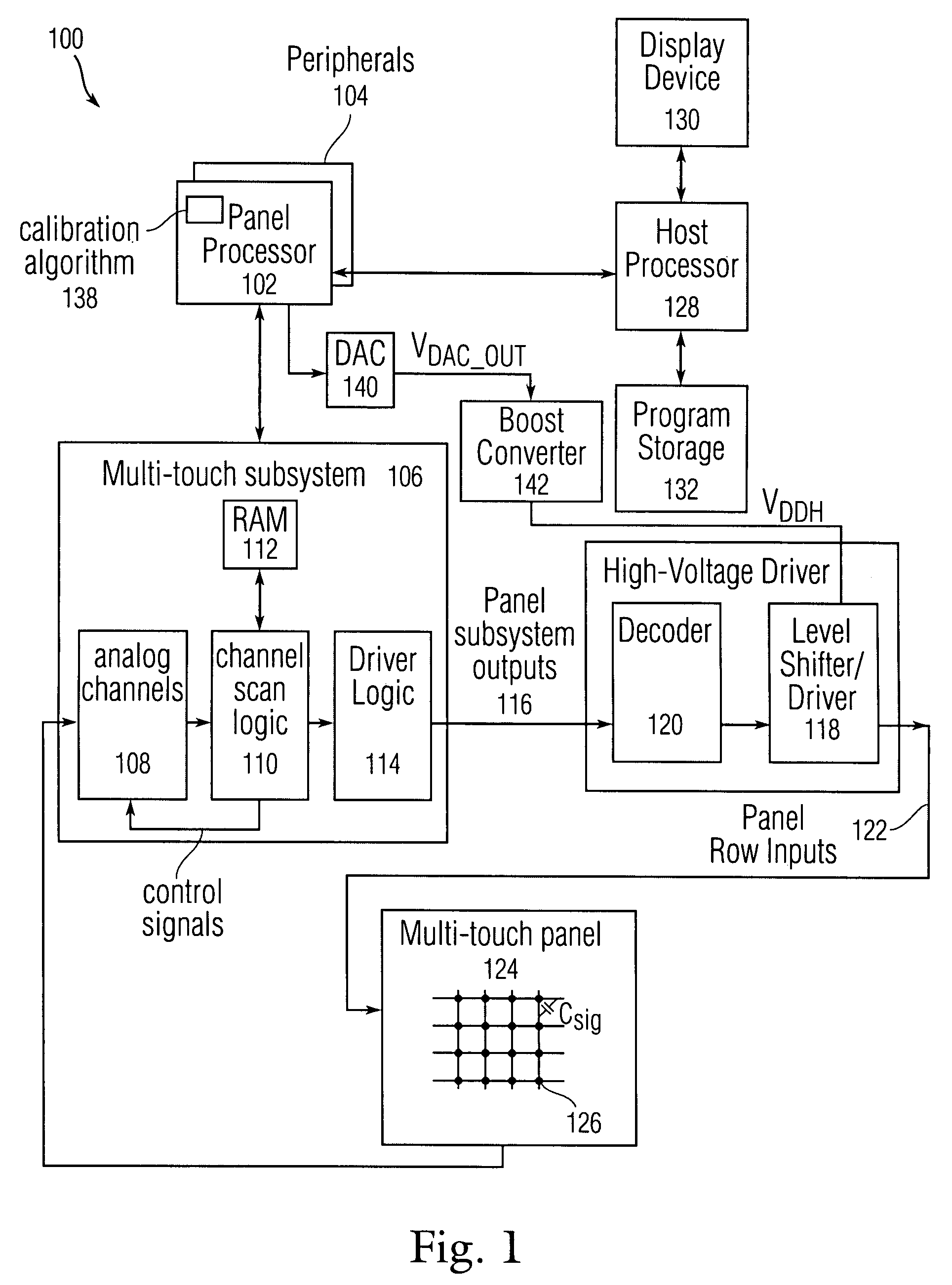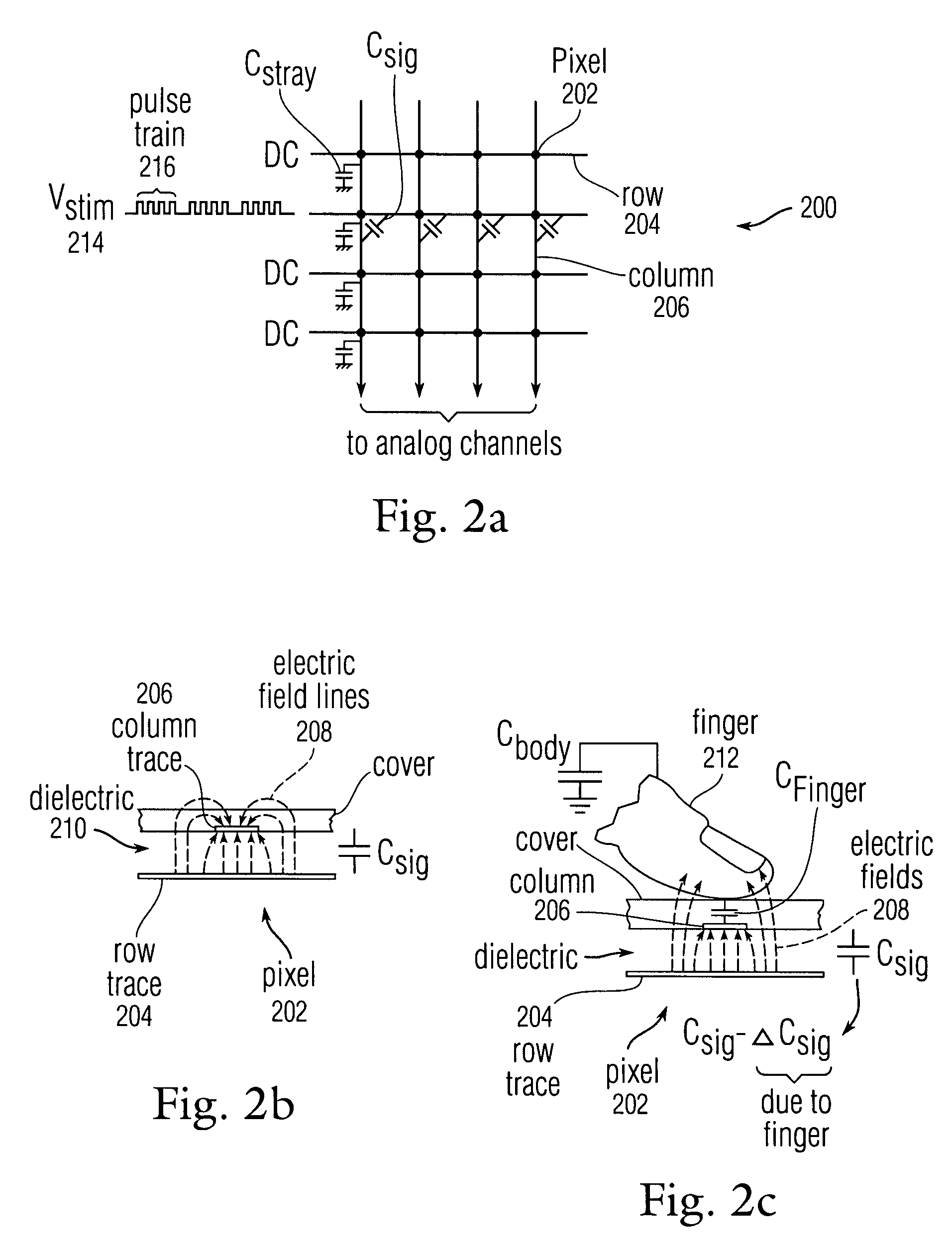Periodic sensor autocalibration and emulation by varying stimulus level
a sensor and stimulus level technology, applied in the field of sensor panels, can solve problems such as difficulty in user experien
- Summary
- Abstract
- Description
- Claims
- Application Information
AI Technical Summary
Benefits of technology
Problems solved by technology
Method used
Image
Examples
Embodiment Construction
[0026]In the following description of preferred embodiments, reference is made to the accompanying drawings which form a part hereof, and in which it is shown by way of illustration specific embodiments in which the invention can be practiced. It is to be understood that other embodiments can be used and structural changes can be made without departing from the scope of the embodiments of this invention.
[0027]This relates to the automatic calibration of a sensor panel by varying the amplitude of an input stimulus to simulate a full-touch condition, and then calibrating the sensor panel in accordance with the difference between the simulated full-touch condition and a baseline full-touch condition.
[0028]FIG. 1 illustrates exemplary computing system 100 operable with multi-touch sensor panel 124. Multi-touch sensor panel 124 can detect multiple touches (touch events or contact points) that occur at about the same time (and at different times), and computing system 100 can identify and...
PUM
 Login to View More
Login to View More Abstract
Description
Claims
Application Information
 Login to View More
Login to View More - R&D
- Intellectual Property
- Life Sciences
- Materials
- Tech Scout
- Unparalleled Data Quality
- Higher Quality Content
- 60% Fewer Hallucinations
Browse by: Latest US Patents, China's latest patents, Technical Efficacy Thesaurus, Application Domain, Technology Topic, Popular Technical Reports.
© 2025 PatSnap. All rights reserved.Legal|Privacy policy|Modern Slavery Act Transparency Statement|Sitemap|About US| Contact US: help@patsnap.com



